Dave Thompsons new perspectives
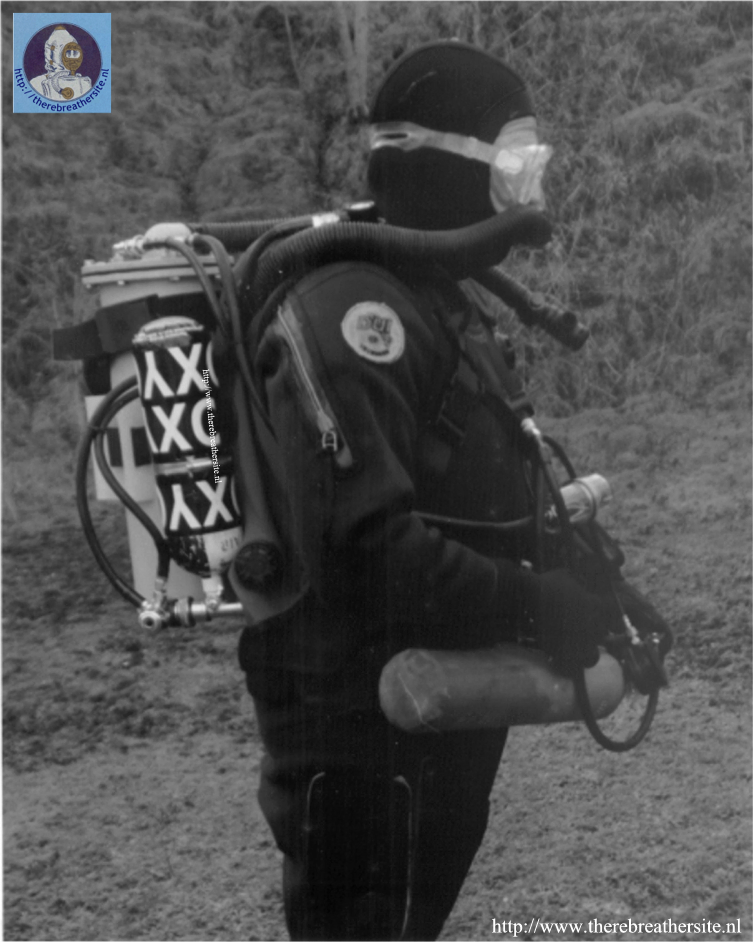
On the picture above you see the prototype of the Inspiration rebreather. Dave Thompson, the inventor of this system, sent me ideas for modifications to the system after putting this world’s best-selling electronic rebreather into production. Some of these were later realized by the manufacturer AP. However, Dave and I strongly discourage you from making any modifications to CE approved rebreathers yourself. History has already proven that this can lead to death. Also, the CE mark will lapse with all its consequences. Read this page to follow the ideas of the inventor and see his ideas become reality.
Recently I received his latest adaptation. An Inspiration with quick release counterlungs. The configuration is based on the standard factory rig, only adapted with a few modifications.. It is a experimental version of the original Inspiration.
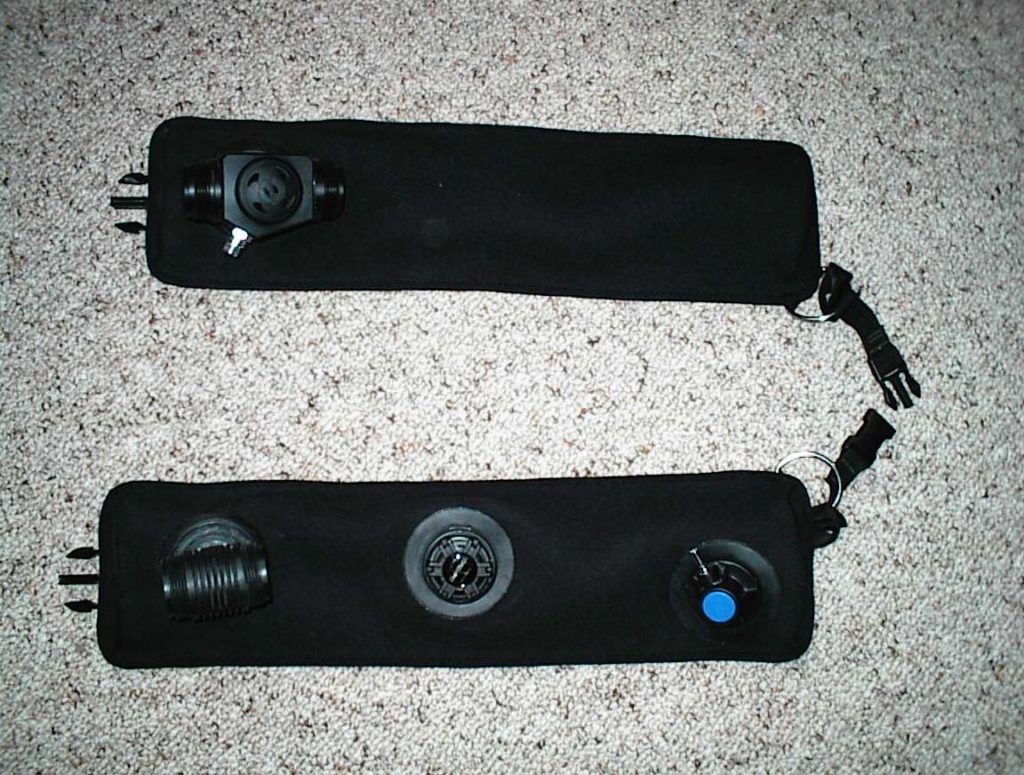
Here you see the quick release neoprene counterlungs. There is only one layer. No inner bags. The breathing comfort increases and the set is much les bulky.
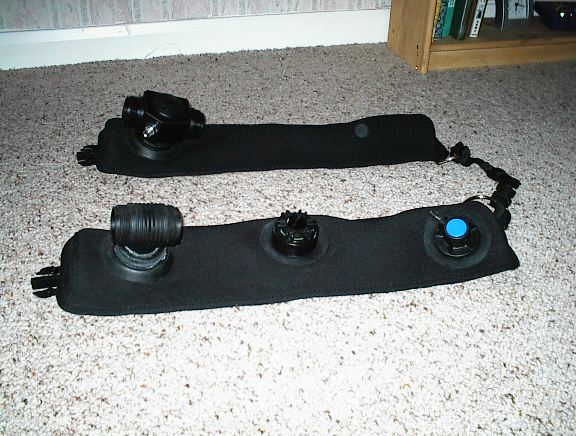
The T-pieces are fitted on the same spot as on the original lungs. There is no diluent button (The blue button is the oxygen addition button..). This is because there is a Automatic Diluent Valve (ADV). With this device the diluent is automatically added. In case the ADV blocks open, it is very easy to close the diluent bottle. There is no need for a diluent button anymore
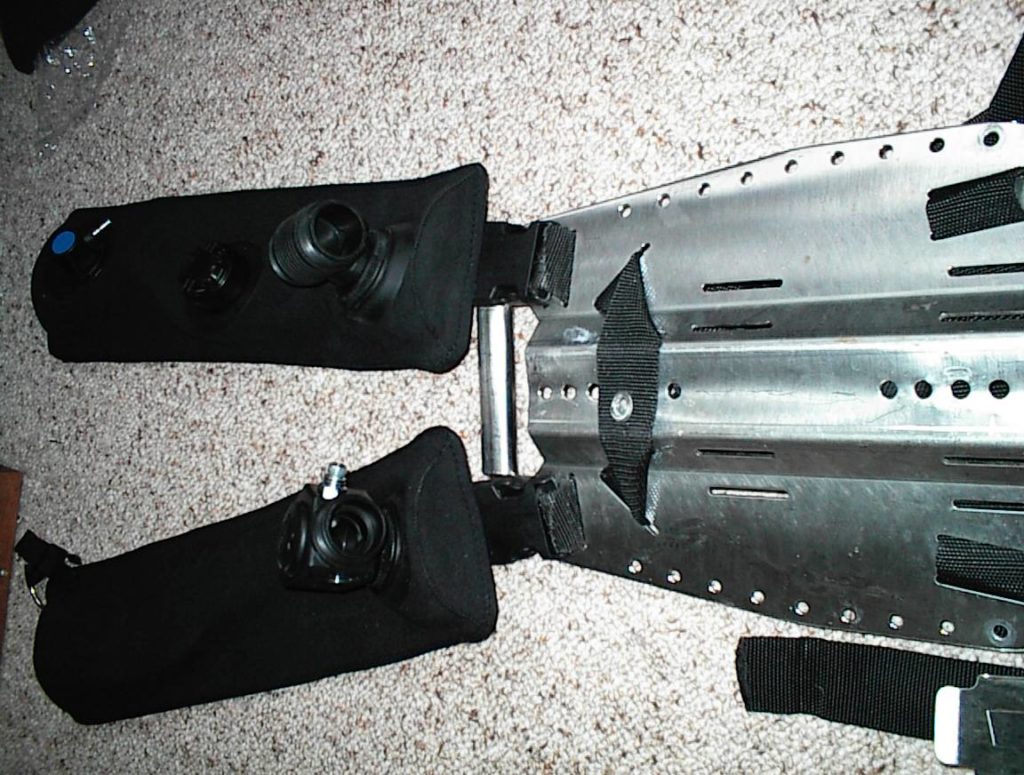
The counterlungs can be attached to the harnas by means of Fastex buckles. This leads to a much more comfortable way of diving!
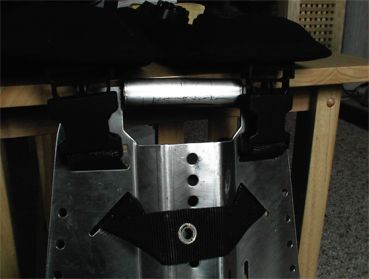
The use of quick release Counterlungs cleaning the lungs in the field is much easier.
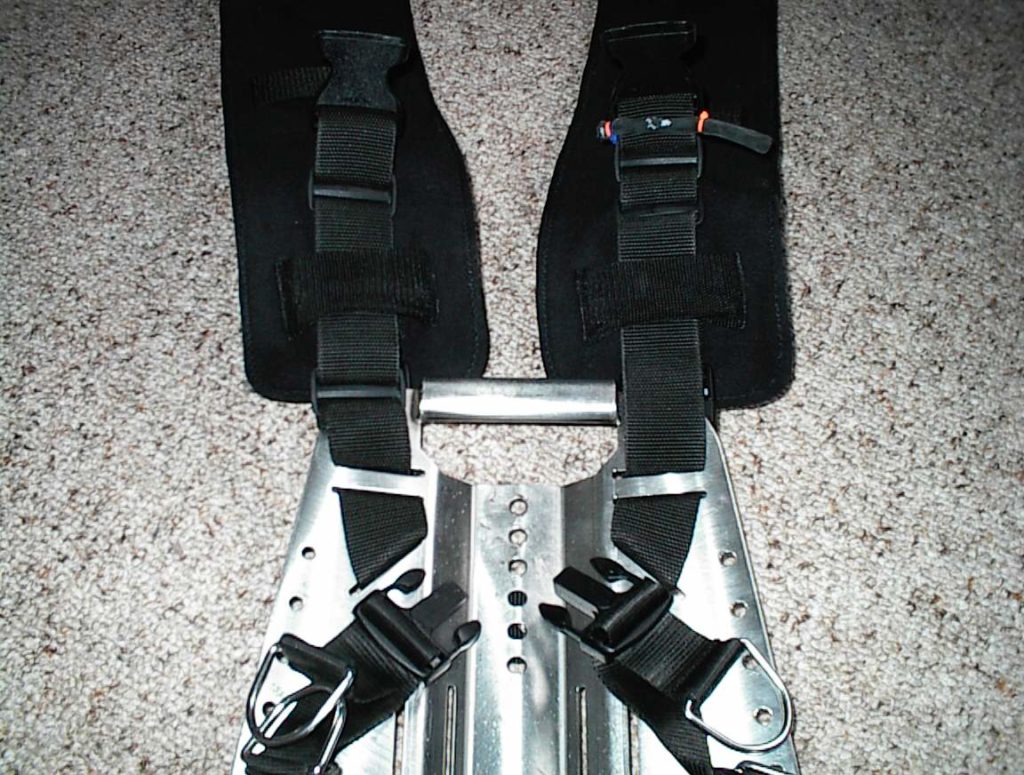
Here you see a picture of the front view on the counterlungs
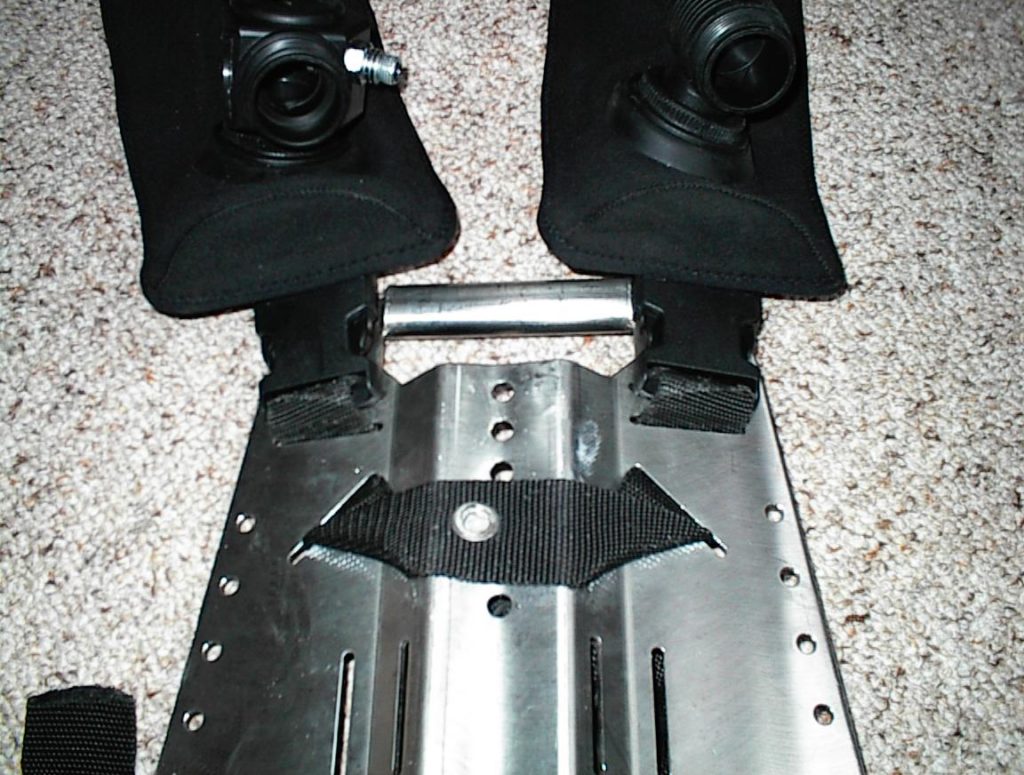
Here you see a picture on the backside.
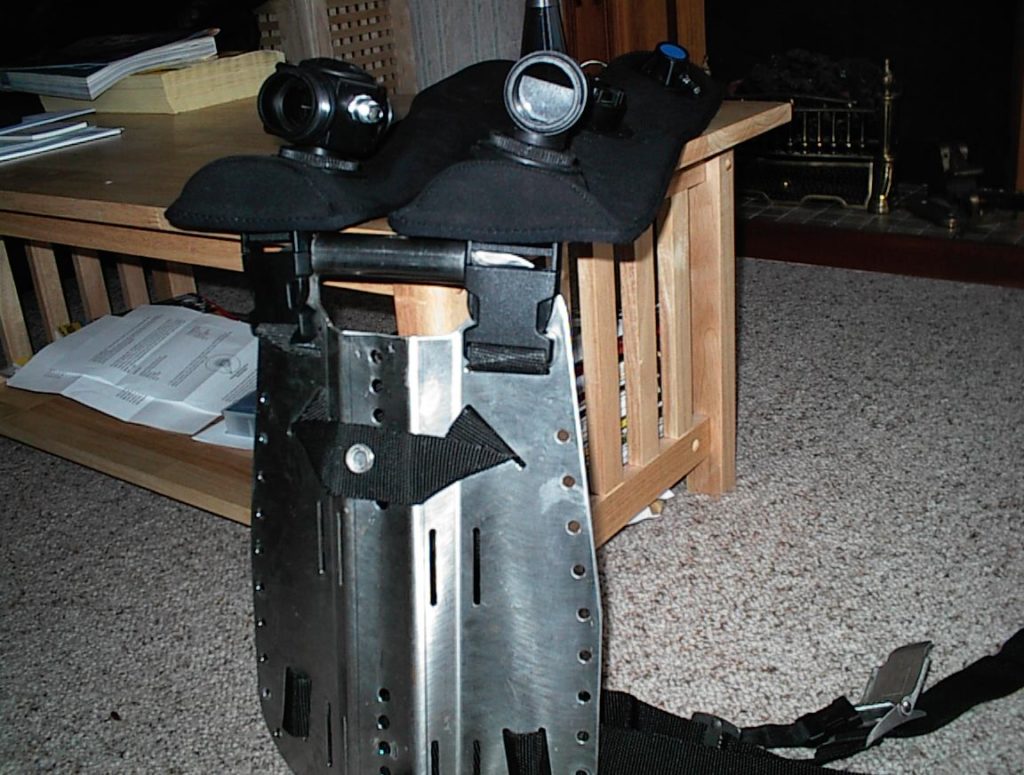
The set is much more compact than the standard wing with counterlungs.
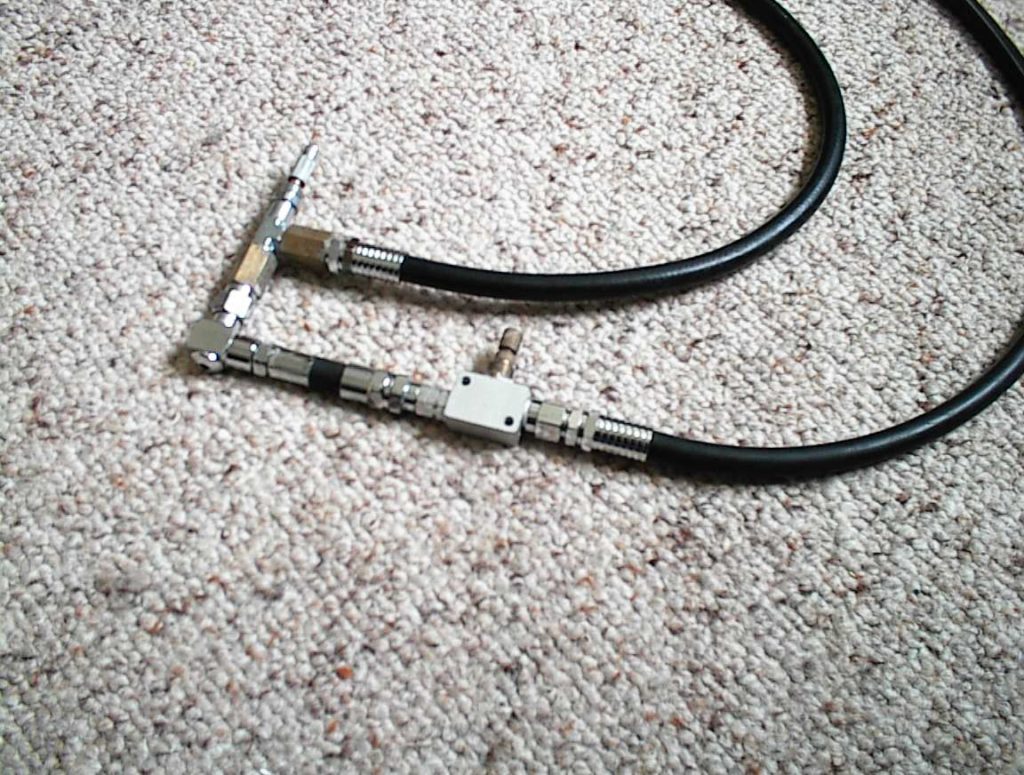
Dave Thompson build for experimental purposes a KISS injection system on the Inspiration. By using the KISS principle very special results can be obtained, ECCR become hybrid systems. If the lower constant mass flow does not supply the diver with enough oxygen the ECCR kicks in. The other way if the electronics should fail the MCCR provides oxygen continiously
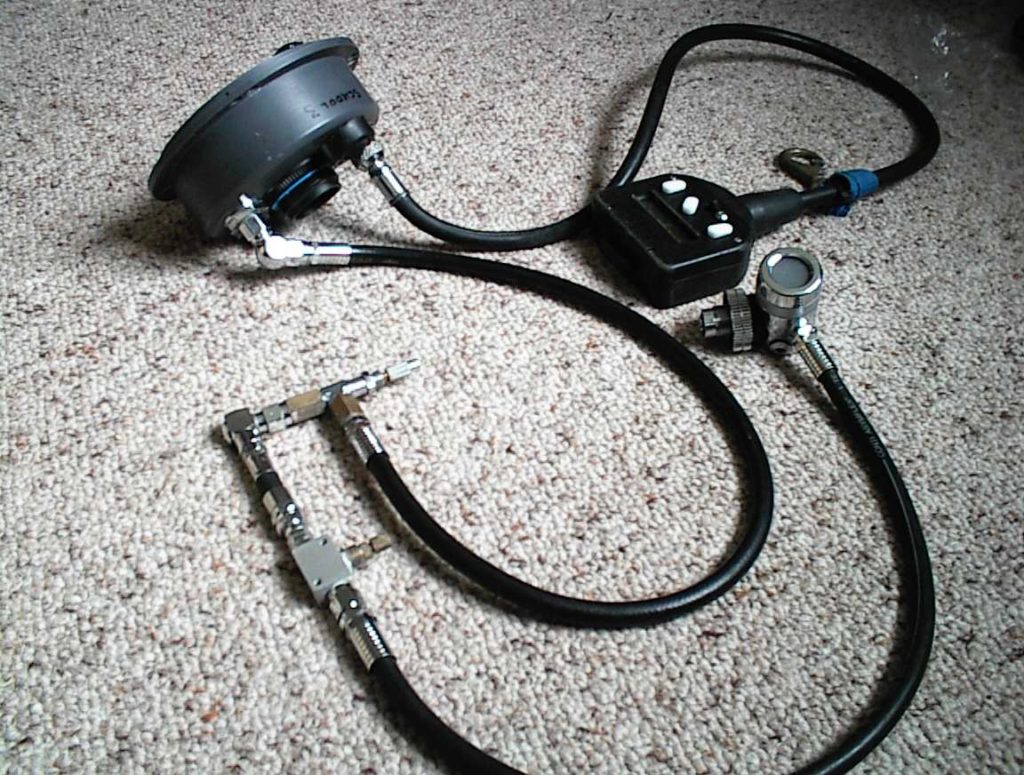
Special to this configuration is the use of a depth compensating first stage! The IP is not fixed so there is no depth limit! Be very carefull using this option! If the IP is to low or to high no CMR will work correct. Most CMF systems work with a fixed IP!
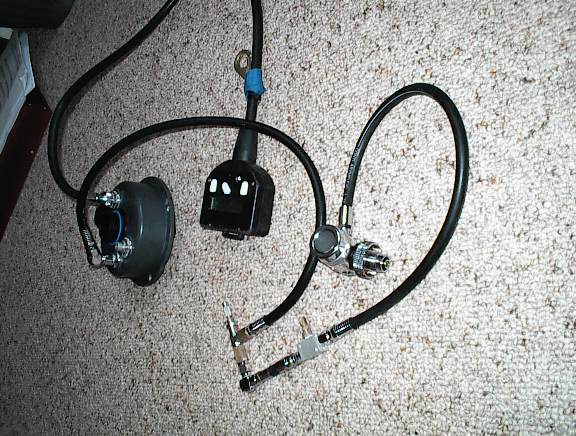
From the first stage the IP is led to a needle valve which is set and locked at 1 lpm. From there it goes to a second fine metering valve which gives control over the actual o2 added.
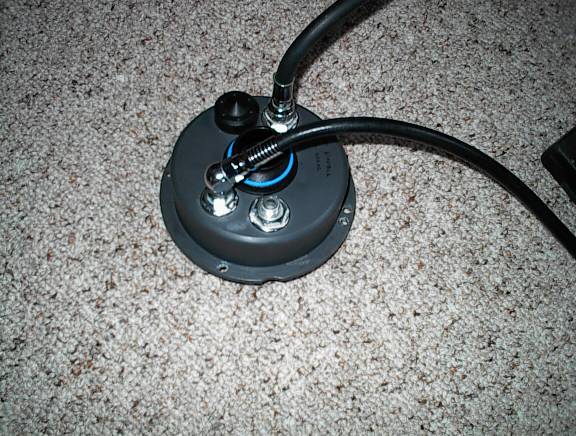
It then goes to the scrubber lid and connects to a second solenoid port but without solenoid!
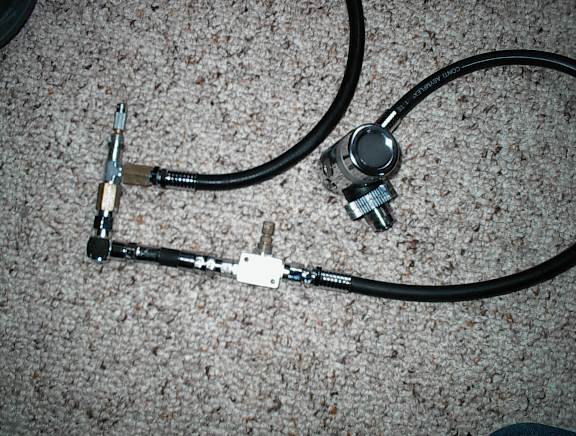
Here you see the complete Kiss-style addition.
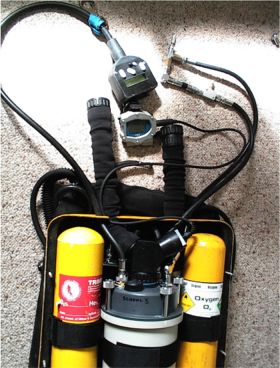
On the scrubberlid there is a Bob Howell cell-holder connected to a VR3. This makes real-time decompression calculations available. (note: in these days decompression was not integrated in the handsets. Classic Inspiration rebreathers only had a double oxygen controlling system).
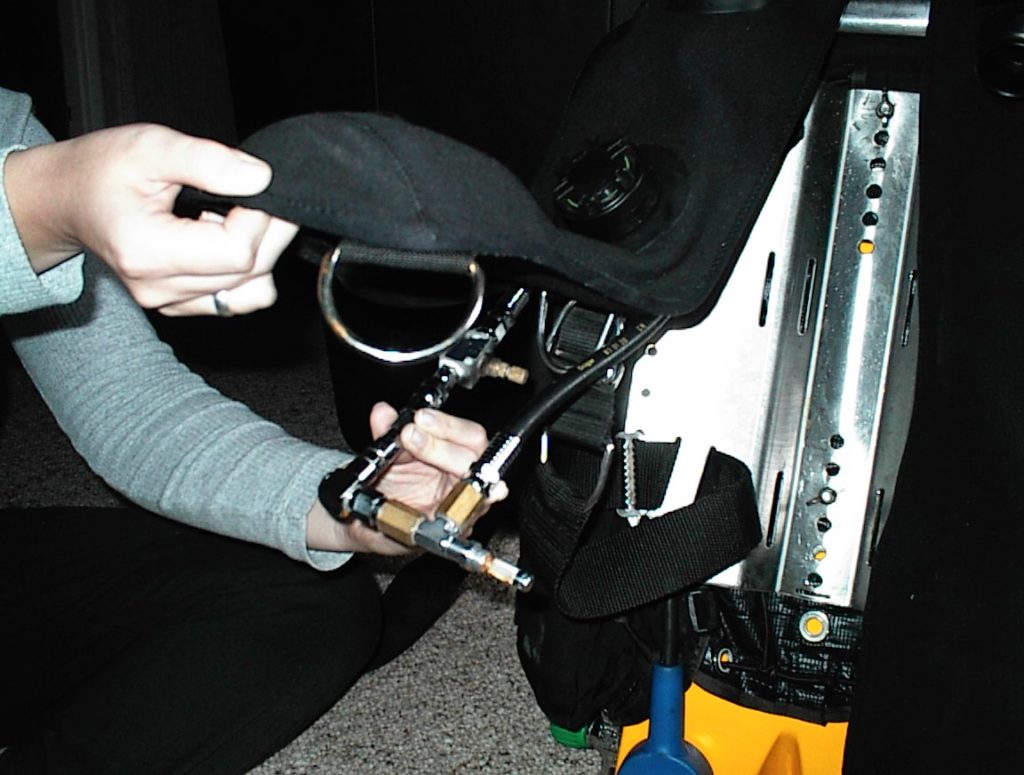
The Kiss valves are mounted under the right counterlung
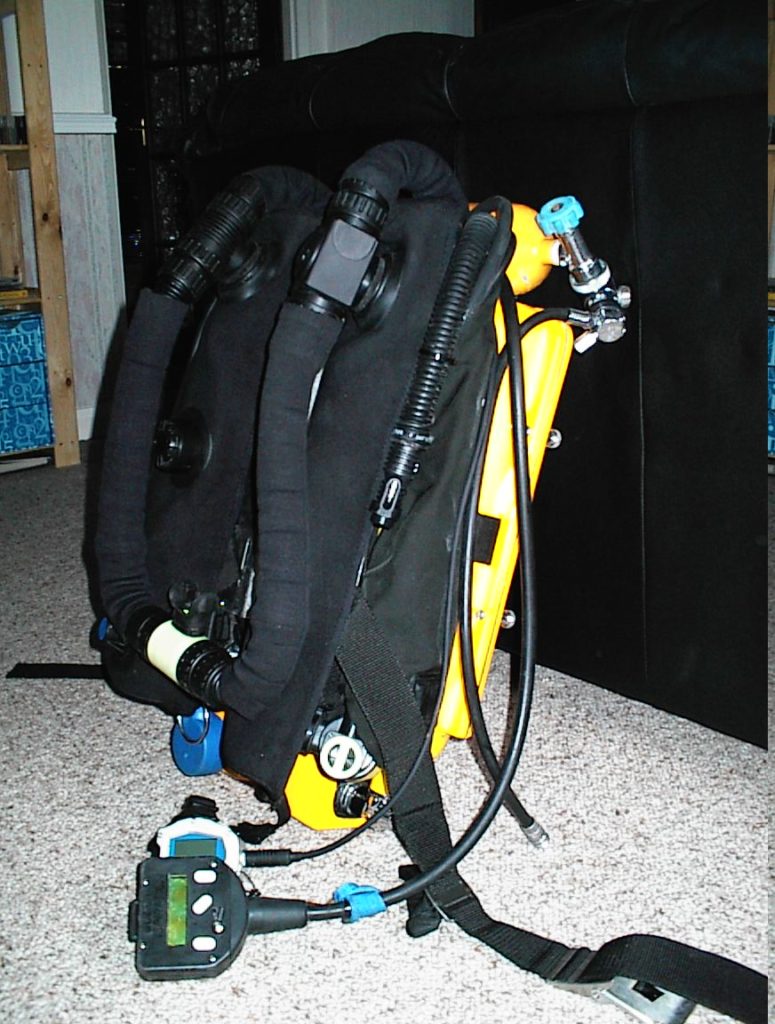
Here the complete unit including separate cylinder for drysuit inflation
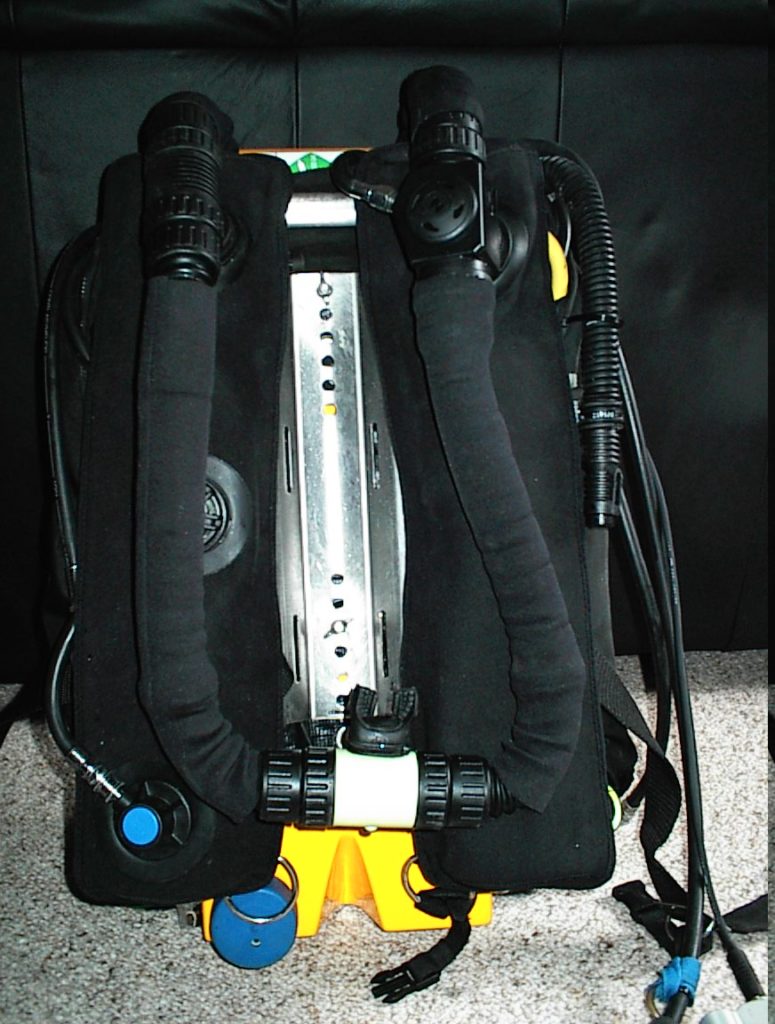
Detail: (Seen from the divers perspective) Upper right site automatic diluent valve ADV, left site down NO button, upper left site overpressure release valve, right bottom (blue) oxygen button
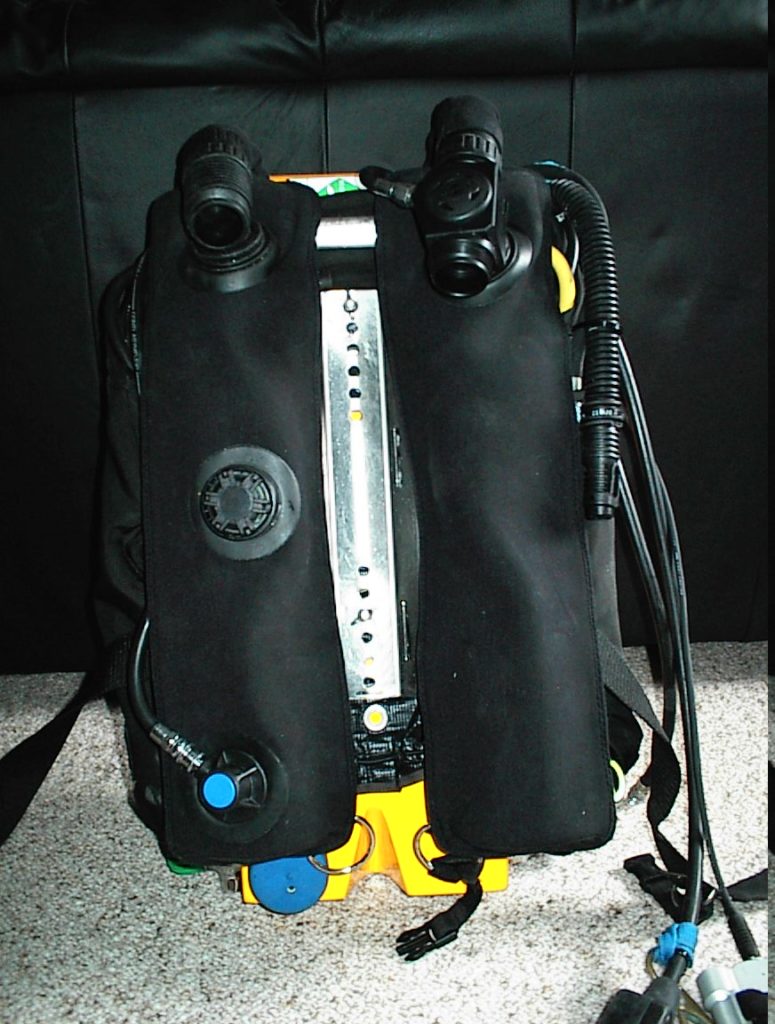
Here it becomes clear that the set is much more comfortable because it is less bulky
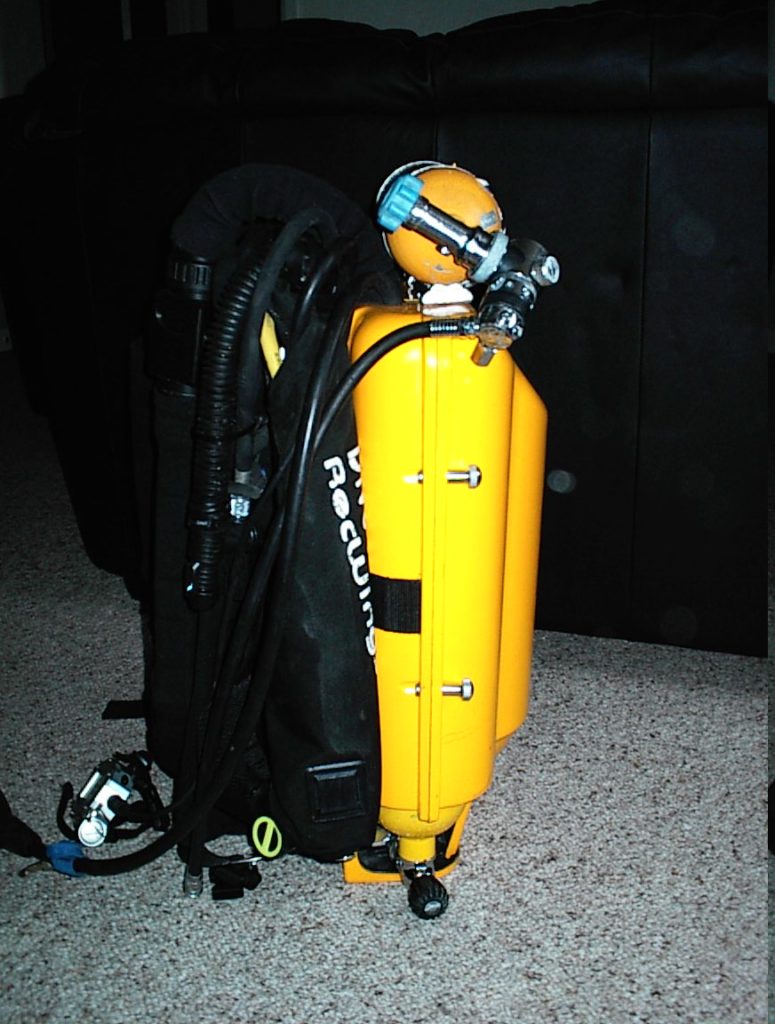
Dave fits his extra cylinder on top of the rebreather. This because there is a minimum influence on the balance of the set.
The valve is easily reached and side-mounted bottles are not in the way
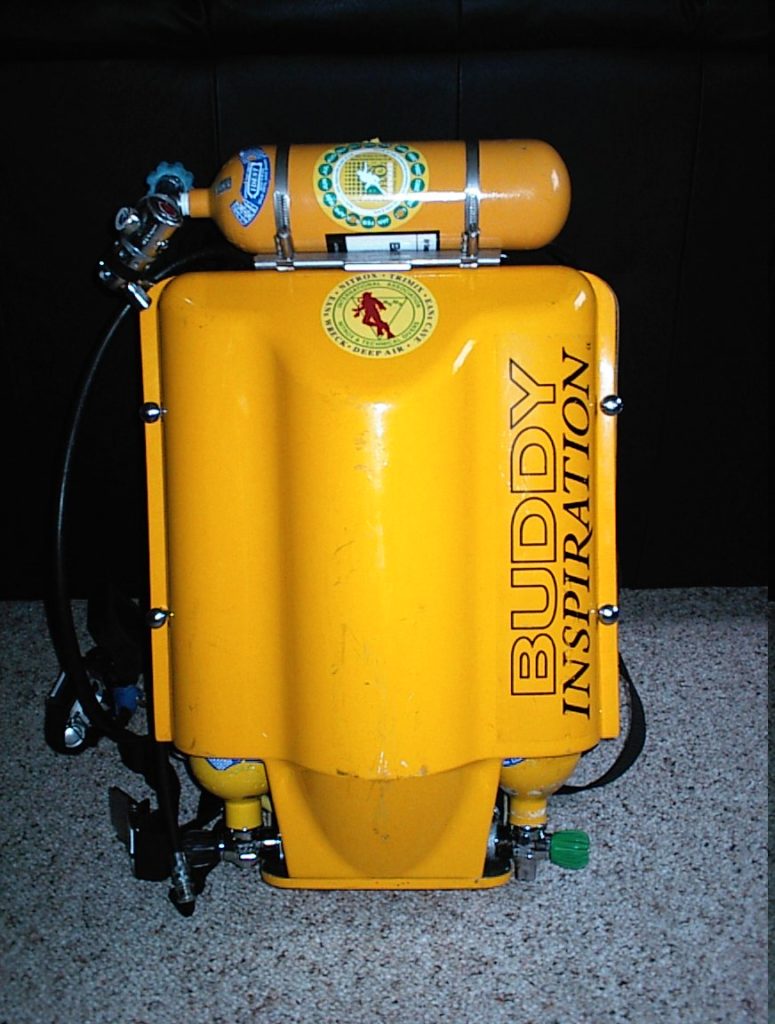
The beauty of the old style housing!
Dave, thanks for contributing to my website. I often think back to our adventures in the South of France where I experienced you as a teacher of my trimix course. Fantastic memories!

Therebreathersite was founded by Jan Willem Bech in 1999. After a diving career of many years, he decided to start technical diving in 1999. He immediately noticed that at that time there was almost no website that contained the history of closed breathing systems. The start for the website led to a huge collection that offered about 1,300 pages of information until 2019. In 2019, a fresh start was made with the website now freely available online for everyone. Therebreathersite is a source of information for divers, researchers, technicians and students. I hope you enjoy browsing the content!
